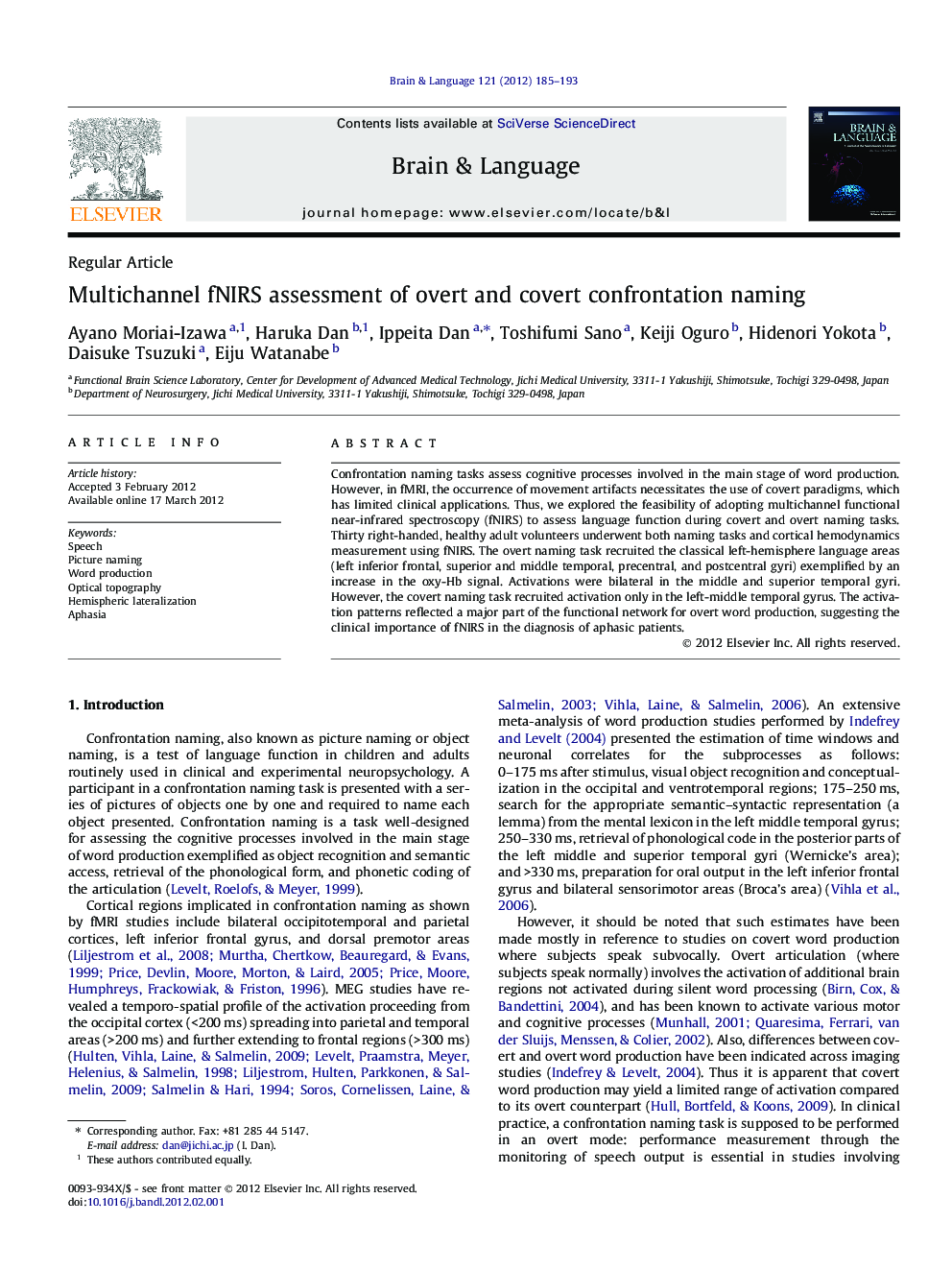| Article ID | Journal | Published Year | Pages | File Type |
|---|---|---|---|---|
| 925443 | Brain and Language | 2012 | 9 Pages |
Confrontation naming tasks assess cognitive processes involved in the main stage of word production. However, in fMRI, the occurrence of movement artifacts necessitates the use of covert paradigms, which has limited clinical applications. Thus, we explored the feasibility of adopting multichannel functional near-infrared spectroscopy (fNIRS) to assess language function during covert and overt naming tasks. Thirty right-handed, healthy adult volunteers underwent both naming tasks and cortical hemodynamics measurement using fNIRS. The overt naming task recruited the classical left-hemisphere language areas (left inferior frontal, superior and middle temporal, precentral, and postcentral gyri) exemplified by an increase in the oxy-Hb signal. Activations were bilateral in the middle and superior temporal gyri. However, the covert naming task recruited activation only in the left-middle temporal gyrus. The activation patterns reflected a major part of the functional network for overt word production, suggesting the clinical importance of fNIRS in the diagnosis of aphasic patients.
► We assessed cortical activation patterns during confrontation naming tasks. ► Multichannel fNIRS was used to assess activation for covert and overt naming tasks. ► Oxygenated hemoglobin parameters were found to be sensitive. ► The overt naming task mainly recruited the classical left-hemisphere language areas. ► The growing clinical importance of fNIRS in diagnosing aphasia is suggested.
